On Arrival
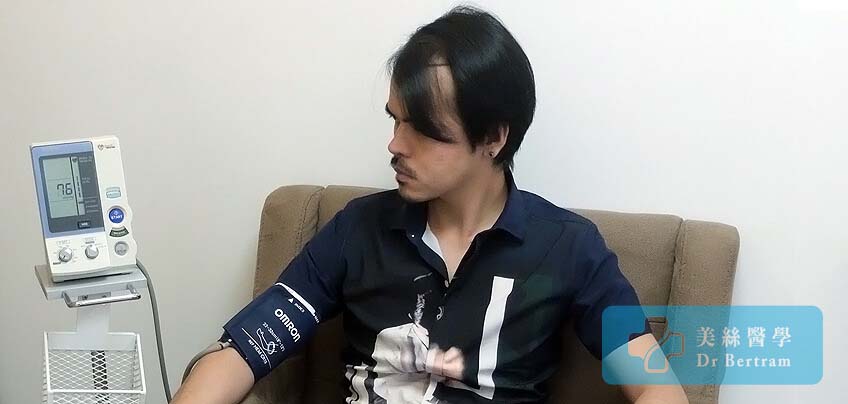
On the day of your procedure, our entire team will be dedicated to your personal care. They would ensure that your procedure is conducted smoothly and safely.
Technical staff may also greet you, collect your paperwork, advise you on how your day will unfold and answer your questions. When you arrive for your operation, a technician will provide you with a surgical garment and will wash your hair and scalp with a disinfecting shampoo. During your procedure, your team will ensure your comfort, make sure you get breaks when you need them, make sure you are not thirsty and will order a nice lunch for you.
Question & Answer
You have plenty of time to clarify any concern. The procedure will be explained again signing a consent. It's just like any other medical treatment. Inform the doctor regarding any drug allergy.
Antiseptic Hair Wash
To reduce bacterial colonization on the scalp we wash your hair one more time with antiseptic.
Premedication
Two types of medicine will be given: a pain-preventer and a relaxant. We do not use antibiotic as routine as we have successfully cut down postoperative infection to less than 1%. The relaxant helps to reduce any anxiety or discomfort during the procedure.
Hairline Design and Surgical Plan
Now is the time to re-confirm what you want. The Doctor will design the hairline for you. Total area is measured again to estimate the final count. The surgical plan must be agreed and approved by you commencing the procedure.
Selecting Donor Hair
The doctor will examine your occipital area carefully looking for permanent hair. The donor area ia then marked.
Counting Hair Density
We trim the donor hair and count the density with a computer device called Folliscope. The length and width of the strip can then be accurately measured.
Positioning
You will be lying face down during donor harvesting. Our hair transplant chair will provide you comfortable support. Most patients just fall asleep and then wake up for lunch.
Local Anesthesia

Level I Conscious Sedation
Our procedure is performed under local anesthesia without any intramuscular or intravenous injection. This is Level I Conscious Sedation in accordance to the American Standard outlined in the MASSACHUSETTS MEDICAL SOCIETY OFFICE-BASED SURGERY GUIDELINES. Minimal oral relaxing medications are given and during procedure.
Vital Signs
A monitor is connected to check you body response during injection to ensure safety.
Pain Less Injection
Massage, vibration, ice cube are very effective measures to distract you from feeling pain during injection. We are using the very small 30G needle and special technique. Inject very slowly is the key to minimize any discomfort.
Graft Harvesting
Tumescence
Specially prepared fluid called Tumescence is injected to lift the skin up and away from the bone. This prevent any possible damage to the deep seated nerves and blood vessels, and provide good skin turgor for easy dissection.
Graft Harvesting By FUE
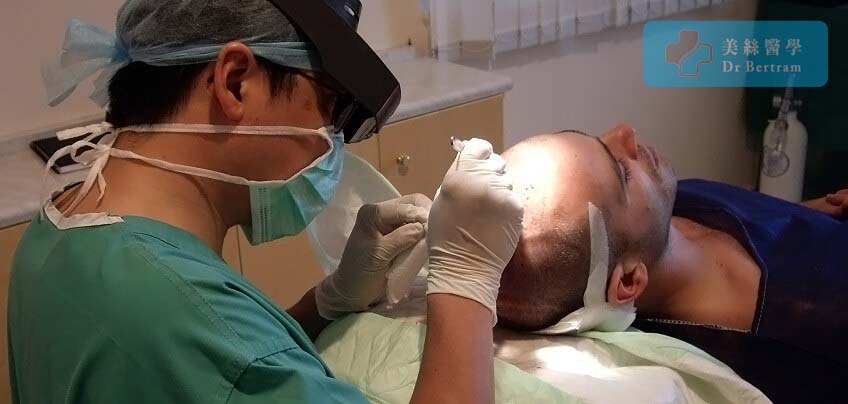
We use our own designed titanium FUE punch. Size 0.8mm in diameter is used for Asian thicker Hair, whilst 0.7mm is reserved for Caucasian. This size keeps grafts intact yet leaves minimal scar. Depth control is set to avoid graft transaction. We use both manual and automatic FUE depending on hair character. Every graft is extracted one-by-one carfefully not to damage any follicle.
Graft Harvesting By FUT / Strip
We dissect the strip with a single blade using magnified
loupes. The blade is angled parallel to the hair follicles
to minimize transection. Excision is made quite
superficially with minimal bleeding. We use the Trichophytic
Technique described by Dr Frechet with 2 layers suturing to
maximize approximation and to minimize scar.
The strip is then sent to our assistants to be dissected
under 10X microscopic magnification into individual graft.
Each graft contains 1 hair ( 1-hair FU-graft ), 2 hairs (
2-hair FU-graft ), or 3 hairs ( 3-hair FU-unit-graft ). The
intact follicles are stored in ATP enriched saline to
maximise graft survival.
Graft Isolatin Under Microscopes
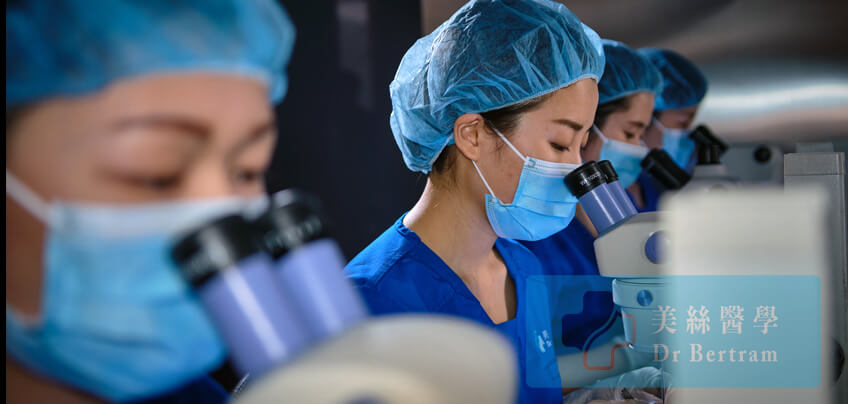
The extracted grafts are sent to our assistants with all redundant tissues trimmed under 10X microscopic magnification. The follicular unit grafts are then sorted into 1-hair FU, 2-hair FU, 3-hair FUs. Follicles are stored in ATP enriched saline to maximise graft survival.
Lunch Break

Recipient Site Preparation
Tumescence
We inject tumescence to lift the skin from the bone. This avoids damage to the deep seated nerve and vessels when making incisions. Our solution is formulated to prevent Ischaemic Reperfusion Injury to the grafts and postoperative facial swelling.
Pre-Incision
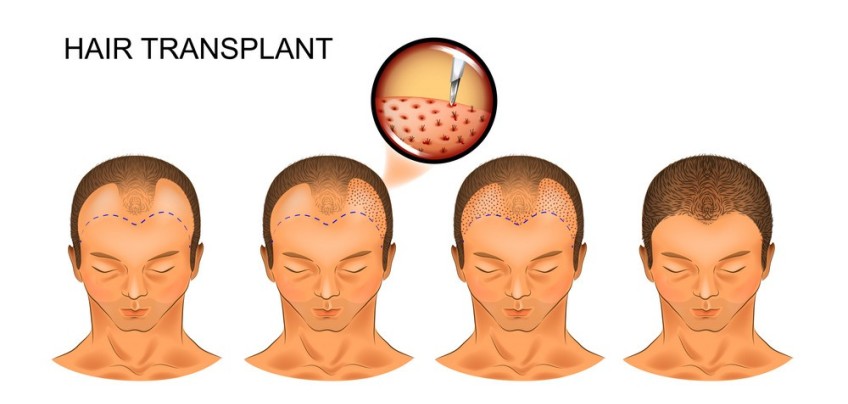
Incision is the creating of small pockets in the skin (called a slit) to accommodate the graft. Slit sizes range from 0.7 to 1.2mm. The doctor studies the angle, direction, and orientation of your existing hair in the recipient area. Incision and insertion must be planned to mimic your natural hair flow. Loupes are worn to magnify the surgical field and prevent damage to existing hair follicles. Incision is the most important step in the entire hair transplant procedures as the slits determined the final hair direction.
Graft Insertion
Grafts outside the body has a limited survival time and must be implanted ASAP. Currently we are using 3 different Isertion Techniques.
1. No-Touch Forceps technique
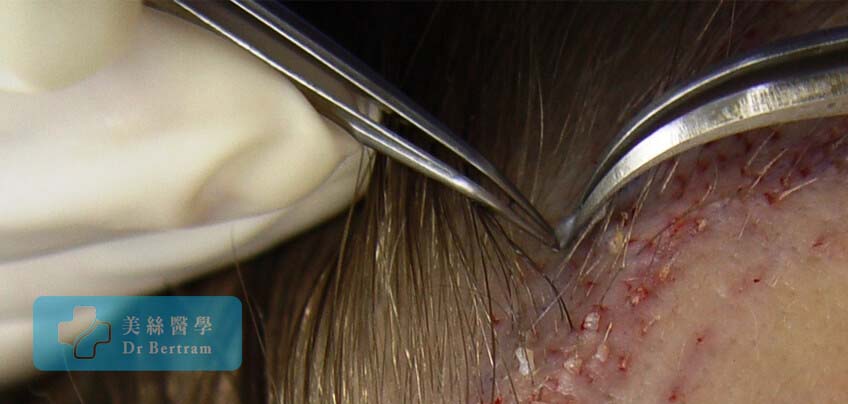
2. Stick and Place
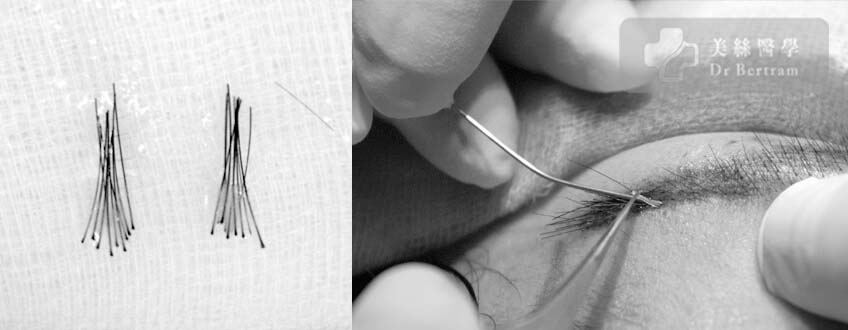
For dense packing we have to eliminate any empty spots between hairs. We keep about 10% of grafts at the end to fill in these spaces. After creating a slit a graft is inserted immediately. This technique of Stick and Place allows more grafts to be inserted per area.
3. Implanter Technique
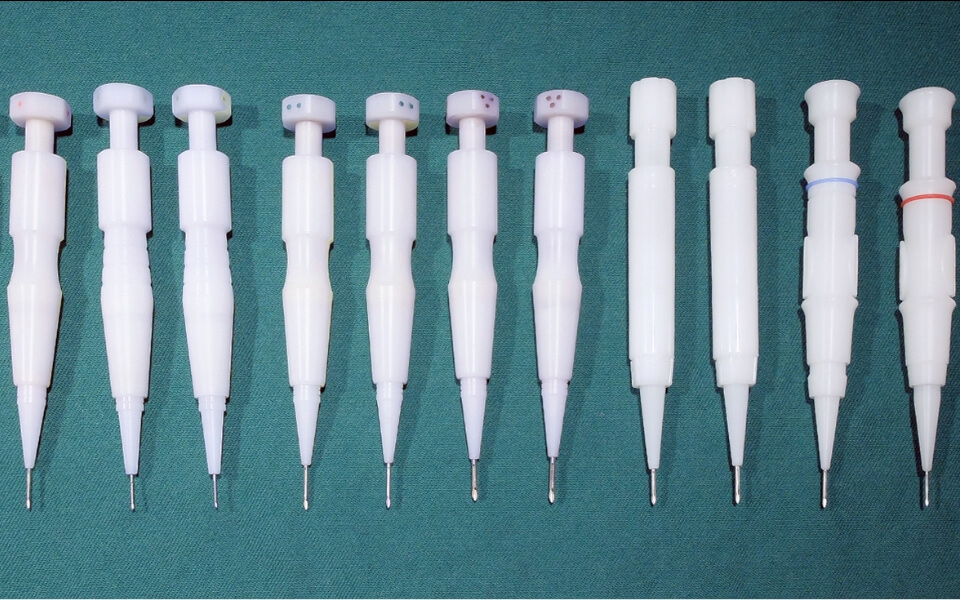
This is commonly used in Korea and Japan, especially for
those using FUE. The follicle is first dragged into its
metal tube inserting the implanter into a slit. On
withdrawal the graft is pushed out and left in the slit. We
have abandoned implanter because of 2 reasons:
• More tissue trauma - the metal tube has
thickness so holes larger than grafts have to be made
• Popping - insertion of an implanters will
pop-up neighboring grafts, very difficult to dense pack.
Going Home
How Long The Procedure Takes ?
Obviously that depends on the number of grafts. Even 3,000 grafts may just take 8 hours. However if you have to take frequent breaks or cannot keep still, more time is required. We reserve the whole day for you to ensure the procedure is accomplished to full satisfaction.
Final Check
Some of the grafts may be dislodged during the procedure. On completion we spend another 20 minutes double- checking every graft. Any loosen ones will be re-inserted to ensure maximum survival.
Dressing
For large session or the crown we may put a dressing overnight. Otherwise a head band will be applied.
Going Home Safely
Most patients are fully awake by the end of the procedure. A cup of coffee usually helps. We will check and make sure you are in good condition letting you do. There is a taxi stand within 2 minutes walk just across the street.

